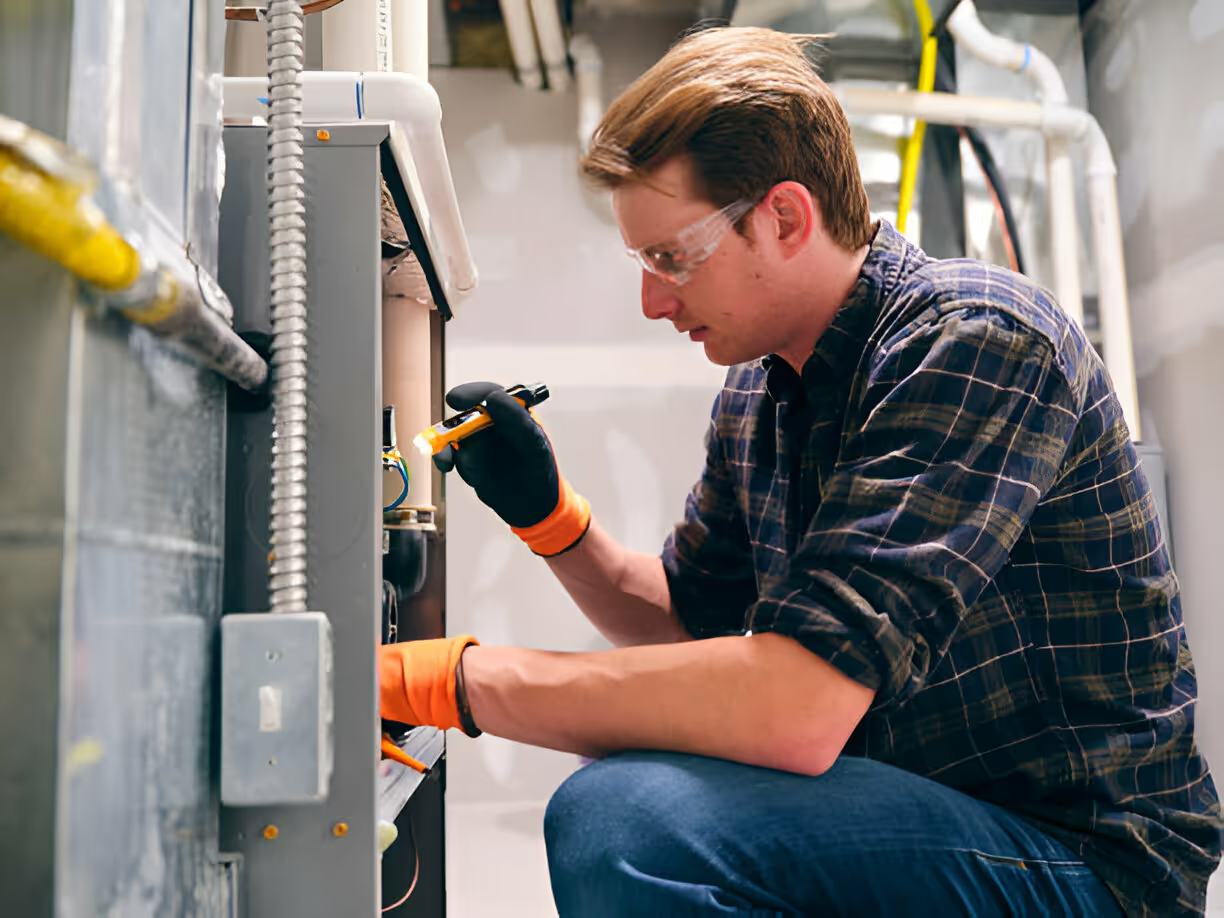Electric Furnaces in Brandon, FL


How electric furnaces work
Electric furnaces generate heat using electric resistance elements. When the thermostat calls for heat, current passes through coils or heating elements that warm up and transfer heat to the air. A blower then circulates the warmed air through existing ducts to rooms throughout the home. Electric furnaces are typically simpler than combustion systems because they have no burners, flues, or gas valves, which reduces venting and combustion-safety concerns.
Benefits and efficiency considerations for Brandon, FL homes
- Simplicity and safety: No combustion means no carbon monoxide risk and no gas line required, making electric furnaces a good fit for neighborhoods without natural gas service or for homes where gas installation is cost-prohibitive.
- Low maintenance: Fewer mechanical parts exposed to combustion processes result in straightforward annual maintenance needs.
- Compatibility: Works well with variable-speed blowers and smart thermostats to improve comfort and zone control.
- Efficiency tradeoffs: Electric resistance heat converts nearly all electrical energy into heat at the furnace, but cost-effectiveness depends on local electricity rates and your home’s heating load. In Brandon, where winters are mild, electric furnaces can be very practical as primary heat or as a supplemental system to heat pumps during occasional cold weather. Consider heat pump alternatives if reducing energy consumption is a top priority.
Common electric furnace types and brand considerations
- Single-stage vs multi-stage blowers: Multi-speed blowers can improve comfort and efficiency by matching airflow to demand.
- Integrated air handler units: Some electric furnaces combine the heating elements with an air handler for a compact footprint.
- Brand features to consider: Reliability of components, availability of replacement parts, warranty length, and compatibility with smart thermostats. Look for units with durable blower motors, easy access panels for service, and certified safety features.
Professional installation and correct sizing
Proper sizing and installation are essential to avoid short cycling, poor comfort, and unnecessary energy use. Key steps in a professional installation include:
- Load calculation (Manual J): A certified technician measures your home to determine accurate heating requirements based on square footage, insulation, window area, orientation, and local climate conditions in Brandon.
- Duct evaluation: Inspecting and sealing ductwork to ensure proper airflow and minimize losses common in older Florida homes.
- Electrical assessment: Verifying the service panel and wiring are adequate for the furnace’s electrical demand and recommending upgrades if needed.
- Placement and clearance: Selecting an indoor location that provides service access, proper airflow, and meets electrical code requirements.
- Integration with controls: Configuring thermostats and any zoning systems so the furnace operates efficiently with existing HVAC equipment.
Routine maintenance and repair services
Routine maintenance extends equipment life and preserves efficiency. Typical services include:
- Replacing or cleaning air filters regularly to protect elements and blower motor.
- Inspecting and testing heating elements for wear and continuity.
- Lubricating blower components and checking belt tension where applicable.
- Verifying blower motor operation, capacitors, relays, and electrical connections.
- Checking safety controls and limits to prevent overheating.
Common repairs in Brandon homes often involve blower motor issues, failed heating elements, control board faults, and dirty filters. Timely diagnosis and repair prevent secondary damage to ductwork and improve indoor comfort during cooler months.
Common troubleshooting tips
- Furnace won’t run: Check the thermostat mode, breakers, and service switch near the furnace.
- Weak airflow: Confirm filter is clean, then inspect supply and return vents and duct sealing.
- Intermittent operation: Could indicate failing elements, loose electrical connections, or a faulty limit switch.
- High utility bill during heating season: Look for short cycling, improper setback strategies, or inadequate insulation that increases run time.
These tips cover quick checks a homeowner can perform; electrical tests and component replacements require a qualified technician.
Costs, financing, and warranty options
Upfront costs for electric furnace equipment and installation vary based on system capacity, unit features, required electrical or ductwork upgrades, and the complexity of the install. Brandon homeowners should expect proposals that detail labor, equipment, permit work, and any electrical service changes. Many providers offer financing options and equipment warranties to protect your investment. Warranties may cover parts and some components for multiple years; extended coverage is often available from manufacturers or through installment agreements from installers.
Rebates and energy-efficiency guidance for Brandon, FL
Federal and local incentive programs can change; homeowners should check current utility or local government programs for rebates on high-efficiency equipment, smart thermostats, or energy-efficiency upgrades. Because Florida has moderate winter demand, pairing an electric furnace with insulation improvements, programmable thermostats, and scheduled maintenance often produces the most cost-effective comfort and can reduce overall energy consumption.
How to request a free estimate or schedule service
Follow these straightforward steps to prepare for an estimate or service visit:
- Gather basic home information: square footage, age of the home, existing HVAC equipment type, and any recent upgrades to insulation or ductwork.
- Note specific comfort issues: rooms that feel cold, drafty areas, thermostat behavior, and any unusual noises.
- Arrange an on-site assessment: a technician will perform a load calculation, inspect ducts and electrical service, and discuss model options and installation requirements.
- Receive a written estimate: expect a detailed scope that outlines equipment, installation steps, electrical or ductwork upgrades, warranties, and available financing or rebate guidance.
- Review and compare proposals: check sizing methodology, warranty terms, and whether proposed equipment meets your comfort and efficiency goals.
Electric furnaces can be a dependable, low-maintenance heating choice for Brandon, FL homes—especially where gas is not available or when paired as backup to heat pump systems. With accurate sizing, routine maintenance, and modern controls, homeowners can achieve consistent comfort and predictable performance during the cooler months.
Service Areas


